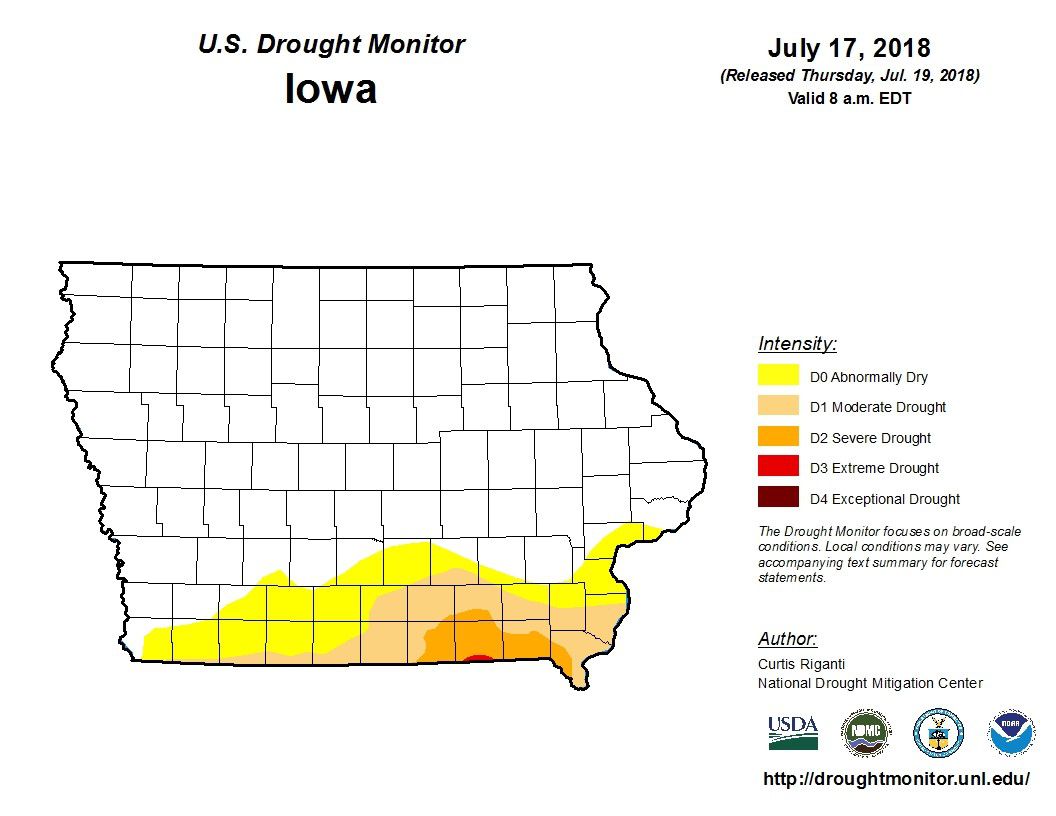July 2018 Growing Degree Days and Precipitation Update
Published
7/25/2018
Growing degree days (GDD), also known as heat units, are calculated by taking the average of the high and low temperature in a day, minus the base temperature of 50°F. The optimal number of growing degree days varies depending on the crop and maturity. Tracking growing degree days is not only helpful in monitoring your crop progress throughout the growing season, but it can also be used in determining when certain insects are more likely to occur. Iowa average growing degree days (GDD) are now ahead of last year at this time. Des Moines is at nearly 2200 cumulative GDD since the beginning of March, however Charles City and Cherokee are just over 1700 GDD.
The second graph shows a comparison of GDD for a few years between 2012 and 2018 at various locations. As you can see, the 2018 Iowa average GDD totals were behind the other years early on, but have recently surpassed the GDD’s accumulated at this point in other recent years such as 2017, 2016, and 2014.
The map below shows the cumulative precipitation beginning in April for several locations across the state. Charles City currently has the highest total out of these locations, while Fairfield is estimated to have the least cumulative rainfall since April 1, 2018. As you can see, several of these locations haven’t had many significant rainfall events in recent weeks. The current drought monitor for Iowa is also shown below – as you can see, a few counties in southeast Iowa are suffering from moderate to severe drought as of July 19 th.

Michelle Mensing, Research Analyst, Decision Innovation Solutions (DIS). DIS is an Iowa-based economic research firm which provides regular farm economic research for Iowa Farm Bureau staff & members.
Want more news on this topic? Farm Bureau members may subscribe for a free email news service, featuring the farm and rural topics that interest them most!